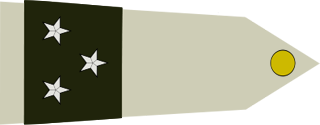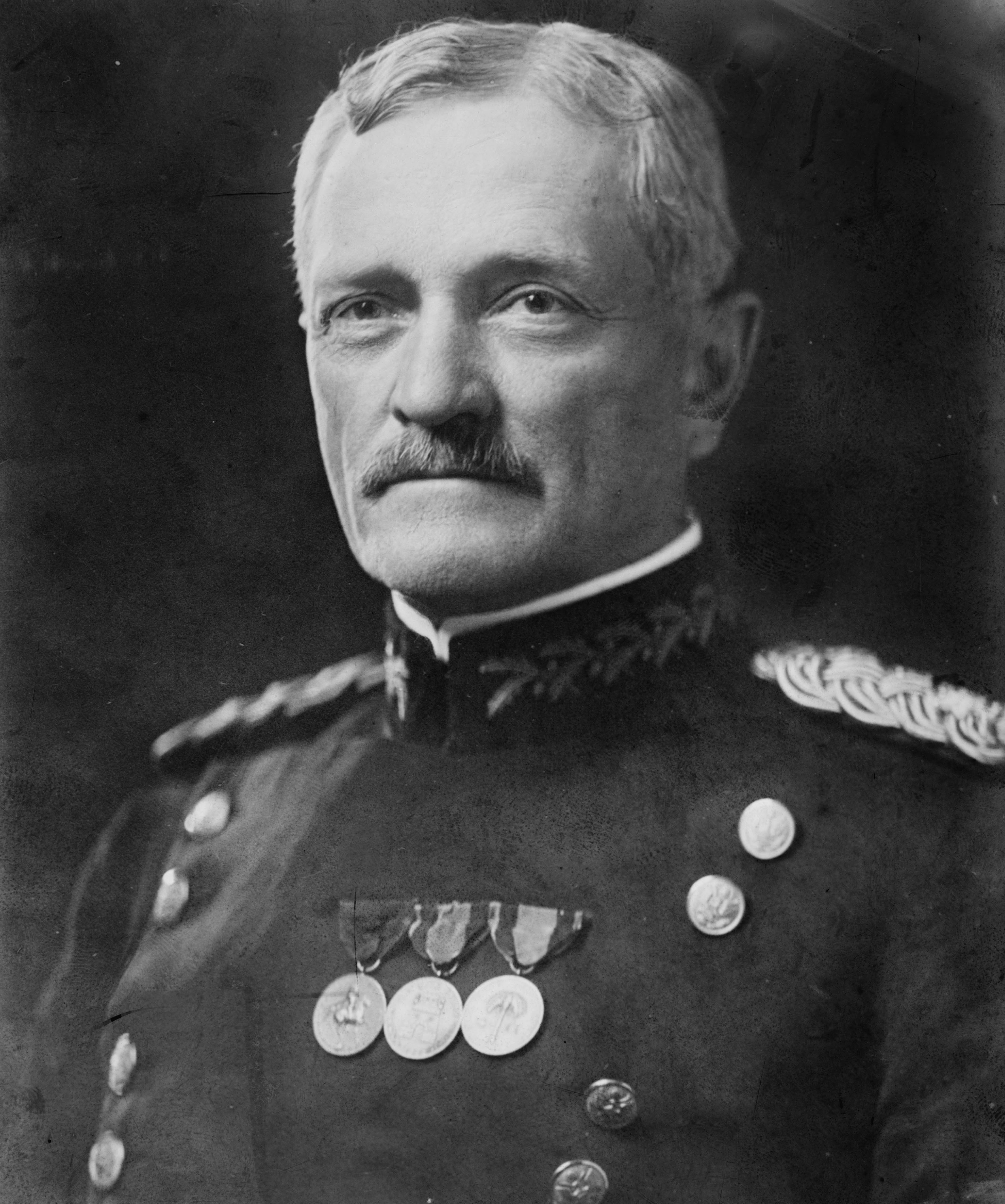|
Ernest Joseph Blondlat
Ernest Joseph Blondlat (1862–1938) was a French Divisional General who participated in World War I. During the war, he was a commander of the 2nd Colonial Army Corps as well as the Moroccan Division. Early career Ernest was born on December 2, 1862, as the son of Claude Nicolas and Marie Dumagnon at Charleville-Mézières. Ernest Blondlat enlisted in the École spéciale militaire de Saint-Cyr as a student of the Class of Egypt from October 29, 1881, to October 1, 1883. He took part in the Sino-French War, the First Franco-Dahomean War and the Second Franco-Dahomean War. Major Blondlat then went to French Madagascar in 1899, where he served under the orders of General Hubert Lyautey. Seriously wounded during the Siege of Androy in October 1901, he later came back from January to April 1902, seizing 4,500 rifles. Blondlat was appointed colonel in 1905 and he commanded Tonkinese units in 1907. In Morocco, from August to September 1912, he commanded the column of the Zaers at th ... [...More Info...] [...Related Items...] OR: [Wikipedia] [Google] [Baidu] |
Charleville-Mézières
or ''Carolomacérienne'' , image flag=Flag of Charleville Mezieres.svg Charleville-Mézières () is a commune of northern France, capital of the Ardennes department, Grand Est. Charleville-Mézières is located on the banks of the river Meuse. History Charleville and Mézières were originally separate communities on opposite banks of the Meuse, about from one another. Charleville was founded by Charles Gonzaga, the 8th duke of Mantua, in 1606. Its inhabitants were known as Carolopolitans (' or ''Carolopolitaines''). It was prosperous from the 17th century, although its fortifications were dismantled under LouisXIV in 1687 and it passed into French hands in 1708. It was plundered by the Prussians in 1815. France's royal armaments factory was formerly located there and gave its name to the Charleville musket, before being relocated and divided between Tulle and Châtellerault. In the 19th century, the city continued to produce arms through private firms, as well as nails, ... [...More Info...] [...Related Items...] OR: [Wikipedia] [Google] [Baidu] |
Battle Of Saint-Mihiel
The Battle of Saint-Mihiel was a major World War I battle fought from 12–15 September 1918, involving the American Expeditionary Forces (AEF) and 110,000 French troops under the command of General John J. Pershing of the United States against German positions. The U.S. Army Air Service played a significant role in this action.Hanlon (1998)History of War (2007) This battle marked the first use of the terms "D-Day" and "H-Hour" by the Americans. The attack at the Saint-Mihiel salient was part of a plan by Pershing in which he hoped that the Americans would break through the German lines and capture the fortified city of Metz. It was the first large offensive launched mainly by the United States Army in World War I, and the attack caught the Germans in the process of retreating. This meant that their artillery was out of place and the American attack, coming up against disorganized German forces, proved more successful than expected. The Saint-Mihiel attack established the st ... [...More Info...] [...Related Items...] OR: [Wikipedia] [Google] [Baidu] |
Hanoï
Hanoi or Ha Noi ( or ; vi, Hà Nội ) is the capital and second-largest city of Vietnam. It covers an area of . It consists of 12 urban districts, one district-leveled town and 17 rural districts. Located within the Red River Delta, Hanoi is the cultural and political centre of Vietnam. Hanoi can trace its history back to the third century BCE, when a portion of the modern-day city served as the capital of the historic Vietnamese nation of Âu Lạc. Following the collapse of Âu Lạc, the city was part of Han China. In 1010, Vietnamese emperor Lý Thái Tổ established the capital of the imperial Vietnamese nation Đại Việt in modern-day central Hanoi, naming the city Thăng Long (literally 'Ascending Dragon'). Thăng Long remained Đại Việt's political centre until 1802, when the Nguyễn dynasty, the last imperial Vietnamese dynasty, moved the capital to Huế. The city was renamed Hanoi in 1831, and served as the capital of French Indochina from 1902 to 1945. On ... [...More Info...] [...Related Items...] OR: [Wikipedia] [Google] [Baidu] |
Saigon
, population_density_km2 = 4,292 , population_density_metro_km2 = 697.2 , population_demonym = Saigonese , blank_name = GRP (Nominal) , blank_info = 2019 , blank1_name = – Total , blank1_info = US$61.7 billion , blank2_name = – Per capita , blank2_info = US$6,862 , blank3_name = GRP ( PPP) , blank3_info = 2019 , blank4_name = – Total , blank4_info = US$190.3 billion , blank5_name = – Per capita , blank5_info = US$21,163 , blank6_name = HDI (2020) , blank6_info = 0.795 ( 2nd) , area_code = 28 , area_code_type = Area codes , website = , timezone = ICT , utc_offset = +07:00 , postal_code_type = Postal code , postal_code = 700000–740000 , iso_code ... [...More Info...] [...Related Items...] OR: [Wikipedia] [Google] [Baidu] |
French Indochina
French Indochina (previously spelled as French Indo-China),; vi, Đông Dương thuộc Pháp, , lit. 'East Ocean under French Control; km, ឥណ្ឌូចិនបារាំង, ; th, อินโดจีนฝรั่งเศส, officially known as the Indochinese Union; vi, Liên bang Đông Dương, , lit. 'East Ocean Federation'; km, សហភាពឥណ្ឌូចិន; lo, ສະຫະພາບອິນໂດຈີນ and after 1947 as the Indochinese Federation,; vi, Liên đoàn Đông Dương; km, សហព័ន្ធឥណ្ឌូចិន; lo, ສະຫະພັນອິນດູຈີນ was a grouping of French colonial territories in Southeast Asia until its demise in 1954. It comprised Cambodia, Laos (from 1899), the Chinese territory of Guangzhouwan (from 1898 until 1945), and the Vietnamese regions of Tonkin (French protectorate), Tonkin in the north, Annam (French protectorate), Annam in the centre, and French Cochinchina, Cochinchin ... [...More Info...] [...Related Items...] OR: [Wikipedia] [Google] [Baidu] |
Lille
Lille ( , ; nl, Rijsel ; pcd, Lile; vls, Rysel) is a city in the northern part of France, in French Flanders. On the river Deûle, near France's border with Belgium, it is the capital of the Hauts-de-France Regions of France, region, the Prefectures in France, prefecture of the Nord (French department), Nord Departments of France, department, and the main city of the Métropole Européenne de Lille, European Metropolis of Lille. The city of Lille proper had a population of 234,475 in 2019 within its small municipal territory of , but together with its French suburbs and exurbs the Lille metropolitan area (French part only), which extends over , had a population of 1,510,079 that same year (Jan. 2019 census), the fourth most populated in France after Paris, Lyon, and Marseille. The city of Lille and 94 suburban French municipalities have formed since 2015 the Métropole Européenne de Lille, European Metropolis of Lille, an Indirect election, indirectly elected Métropole, metr ... [...More Info...] [...Related Items...] OR: [Wikipedia] [Google] [Baidu] |
Armistice Of 11 November 1918
The Armistice of 11 November 1918 was the armistice signed at Le Francport near Compiègne that ended fighting on land, sea, and air in World War I between the Entente and their last remaining opponent, Germany. Previous armistices had been agreed with Bulgaria, the Ottoman Empire and Austria-Hungary. It was concluded after the German government sent a message to American president Woodrow Wilson to negotiate terms on the basis of a recent speech of his and the earlier declared "Fourteen Points", which later became the basis of the German surrender at the Paris Peace Conference, which took place the following year. Also known as the Armistice of Compiègne (french: Armistice de Compiègne, german: Waffenstillstand von Compiègne) from the place where it was officially signed at 5:45 a.m. by the Allied Supreme Commander, French Marshal Ferdinand Foch, it came into force at 11:00 a.m. Central European Time (CET) on 11 November 1918 and marked a vi ... [...More Info...] [...Related Items...] OR: [Wikipedia] [Google] [Baidu] |
10th Army (France)
The Tenth Army (french: Xe Armée) was a Field army of the French Army during World War I and World War II. World War I The Tenth Army, first called ''détachement d'armée Maud'huy'', was formed on 1 October 1914 during the Race to the Sea. It gained a victory in the Battle of Arras (1914). Later, it took part in the Second Battle of Artois (May 1915), the Third Battle of Artois (September 1915), the Battle of the Somme (July 1916), and the Second Battle of the Aisne (April 1917). In October 1917, at the request of the Italian Supreme Commander, General Luigi Cadorna, the Tenth Army moved onto the Italian Front alongside British Expeditionary Force units, together forming the Italian Expeditionary Force. For this operation the army included the 12th Army Corps and the 31st Army Corps, for a total of six infantry divisions of French troops. The Italians had been pushed back at the Battle of Caporetto by German Army reinforced Austro-Hungarian divisions. French forces were s ... [...More Info...] [...Related Items...] OR: [Wikipedia] [Google] [Baidu] |
Battle Of El-Fedj
A battle is an occurrence of combat in warfare between opposing military units of any number or size. A war usually consists of multiple battles. In general, a battle is a military engagement that is well defined in duration, area, and force commitment. An engagement with only limited commitment between the forces and without decisive results is sometimes called a skirmish. The word "battle" can also be used infrequently to refer to an entire operational campaign, although this usage greatly diverges from its conventional or customary meaning. Generally, the word "battle" is used for such campaigns if referring to a protracted combat encounter in which either one or both of the combatants had the same methods, resources, and strategic objectives throughout the encounter. Some prominent examples of this would be the Battle of the Atlantic, Battle of Britain, and Battle of Stalingrad, all in World War II. Wars and military campaigns are guided by military strategy, whereas bat ... [...More Info...] [...Related Items...] OR: [Wikipedia] [Google] [Baidu] |
French Protectorate In Morocco
The French protectorate in Morocco (french: Protectorat français au Maroc; ar, الحماية الفرنسية في المغرب), also known as French Morocco, was the period of French colonial rule in Morocco between 1912 to 1956. The protectorate was officially established 30 March 1912, when Sultan Abd al-Hafid signed the Treaty of Fez, though the French military occupation of Morocco had begun with the invasion of Oujda and the bombardment of Casablanca in 1907. The French protectorate lasted until the dissolution of the Treaty of Fez on 2 March 1956, with the Franco-Moroccan Joint Declaration. Morocco's independence movement, described in Moroccan historiography as the Revolution of the King and the People, restored the exiled Mohammed V but it did not end French presence in Morocco. France preserved its influence in the country, including a right to station French troops and to have a say in Morocco's foreign policy. French settlers also maintained their rights and ... [...More Info...] [...Related Items...] OR: [Wikipedia] [Google] [Baidu] |





.jpg)

.jpg)